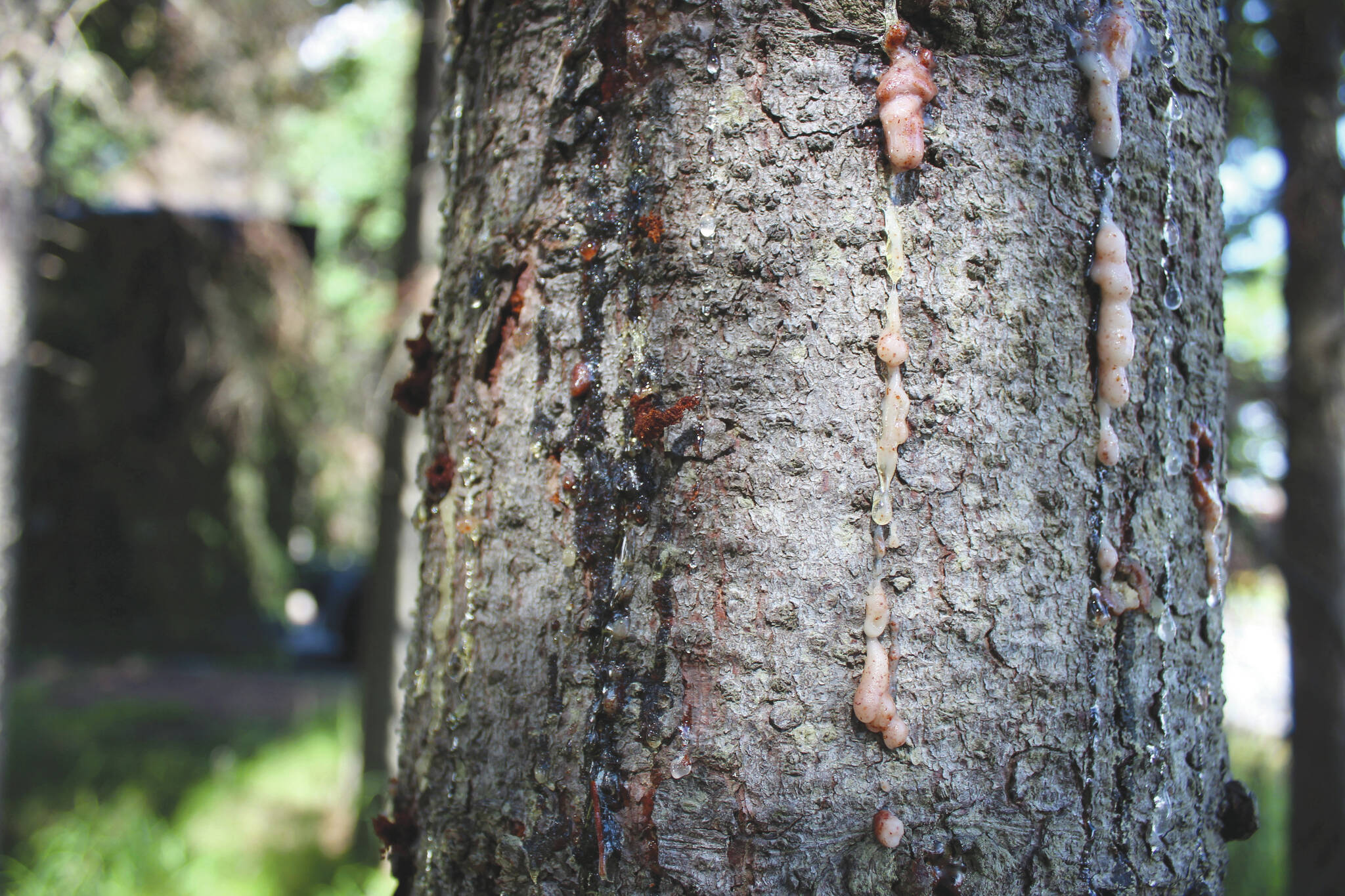As the U.S. Forest Service reports a steep decline in spruce bark beetle activity throughout Alaska, Kenai Peninsula Borough Assembly members last week accepted more than $70,000 in grant funds that will be used to treat infected trees in peninsula communities.
The borough was notified May 9 by the U.S. Department of the Interior’s Bureau of Land Management that its request for federal funding to help mitigate borough land impacted by spruce bark beetles was approved. In all, the borough received $73,500 to treat beetle-killed trees in areas around the Kenai Peninsula.
A list identifies 31 borough properties where beetle kill mitigation work will occur, including 10 Kenai Peninsula Borough School District schools, nine borough transfer sites and nine emergency service agencies, among others. Also included are Serenity House, Heritage Place and Kenai Public Health.
Kenai Peninsula Borough Emergency Manager Brenda Ahlberg, who also serves as the borough’s community and fiscal projects manager, wrote in a May 25 memo to assembly members that the grant funds were made available through the Bureau of Land Management’s “Good Neighbor Authority Program,” which aims to preserve healthy forests.
“This grant will provide the funds to conduct forest inventory and prescribe forest hazard mitigation treatments at KPB public facility sites,” Ahlberg wrote.
A website dedicated to monitoring the spruce bark beetle outbreak in Alaska’s forests, says beetle activity “decreased dramatically” in 2022.
That site, run by the University of Alaska Fairbanks, the Alaska Department of Natural Resources and the U.S. Department of Agriculture, says aerial surveys detected beetle activity on about 48,800 acres of land. That’s as compared to 2021, when aerial surveys detected activity on about 193,500 acres of land.
In all, the current spruce bark beetle outbreak has affected more than 1.86 million cumulative acres, the vast majority of which has occurred in Southcentral Alaska. According to the Forest Service’s 2022 Alaska Forest Health Survey, spruce bark beetle outbreaks are the “most active” near Soldotna and Kasilof, as well as in the Matanuska-Susitna Borough and the lower Denali Borough.
Efforts by the Kenai Peninsula Borough to mitigate the danger presented by beetle-killed trees — which are especially vulnerable to wildfires and are prone to falling over — have been ongoing. In addition to the grant funds accepted Tuesday, the borough has propped up slash sites, contracted out tree removal services and even considered a lumber harvesting program for beetle trees.
The borough assembly in early June approved three separate contracts for the development and management of slash sites in Kasilof, Ridgeway and Kalifornsky Beach, altogether totaling about $160,000.
Spruce bark beetles kill trees by boring through bark and feeding in a tree’s phloem, according to the National Park Service.
Phloem is the innermost layer of the bark and transports compounds produced through photosynthesis to other parts of the tree. By disrupting that process, beetles are able to starve the tree and cause it to die. That death is accelerated by a fungus brought by the beetles that prevents the movement of water through the tree.
A common indicator of beetle presence is boring dust, similar to sawdust, which collects at the base of the infected tree and in bark crevices. The dust is pushed out of holes in the bark where beetles enter and clear tunnels under the bark. Pitch tubes, or red globs on the surface of the tree bark, are seen where the tree has tried to push the beetles out.
Tuesday’s assembly meeting can be streamed on the borough’s website at kpb.legistar.com.
Reach reporter Ashlyn O’Hara at ashlyn.ohara@peninsulaclarion.com.


